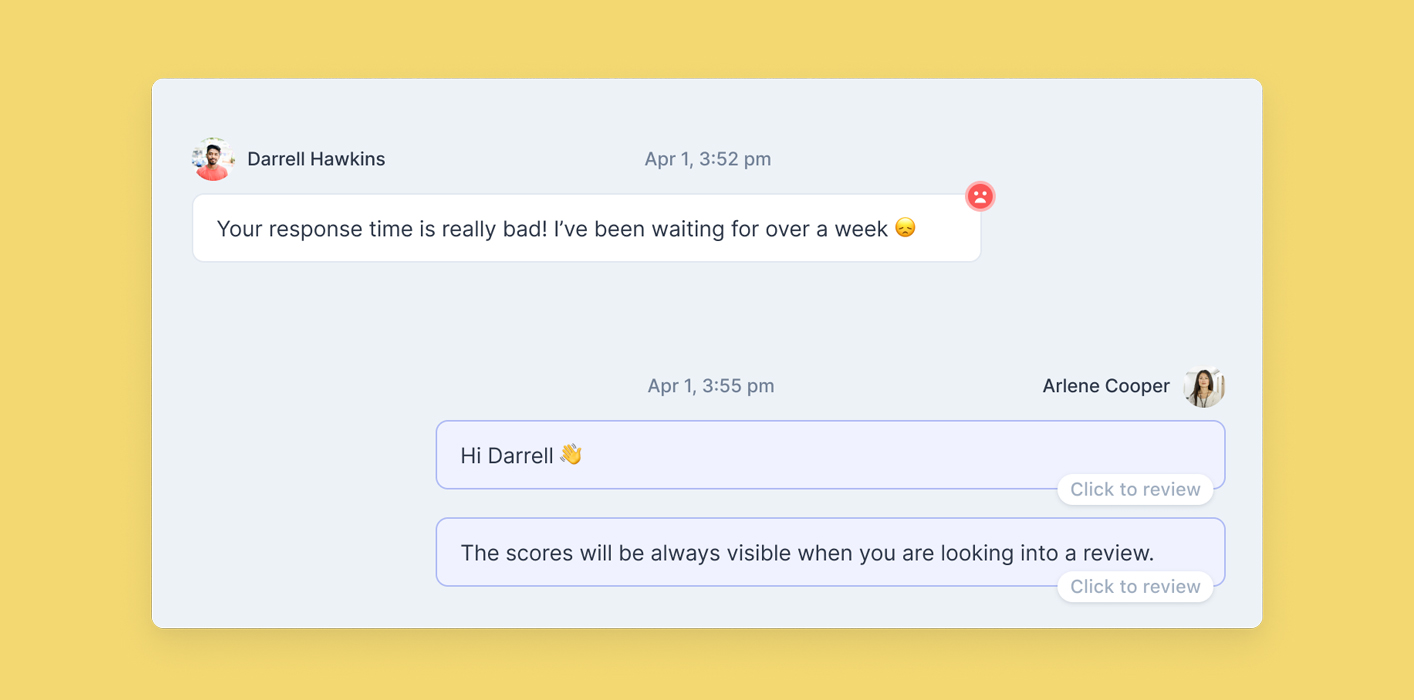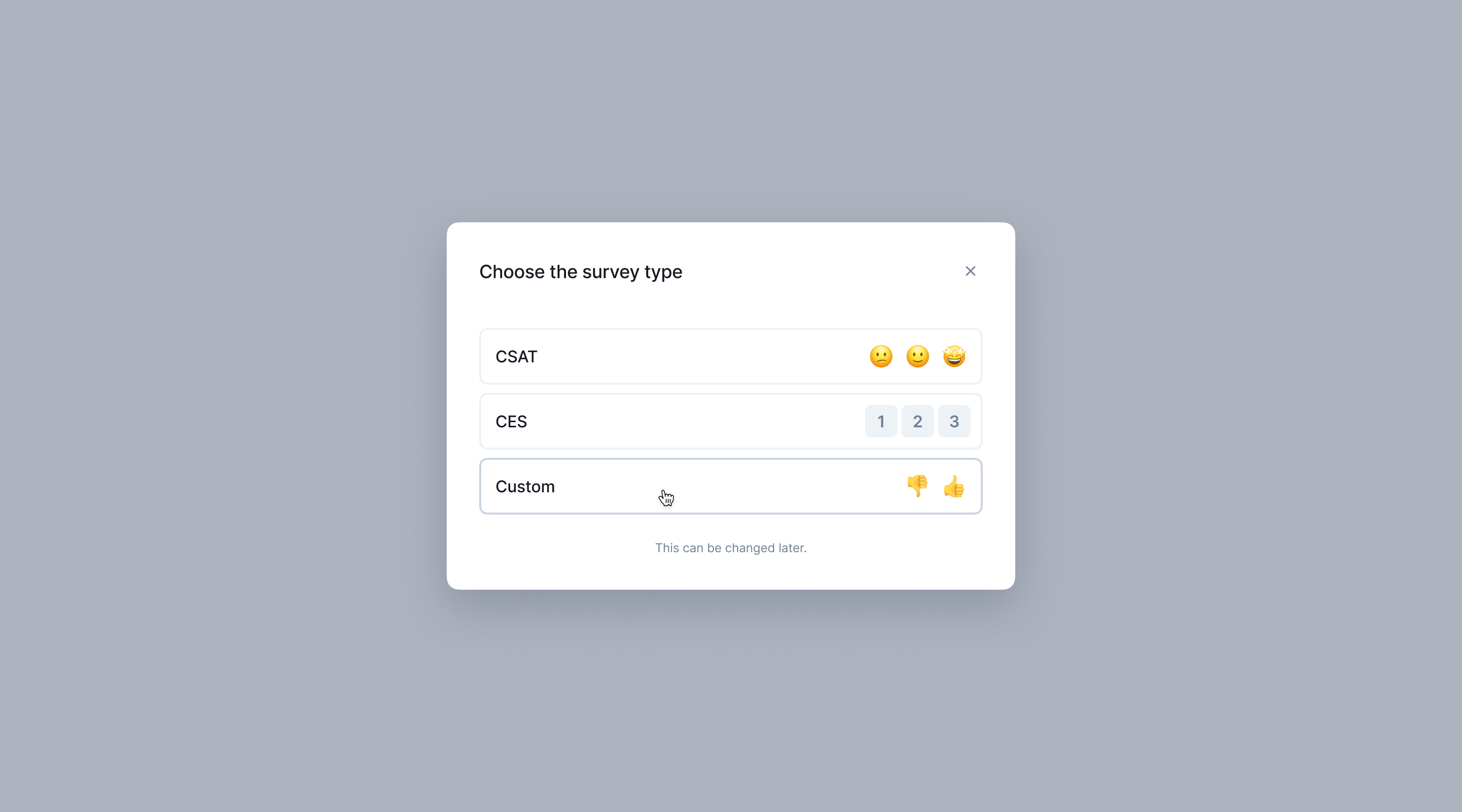Positive customer sentiment often correlates with higher customer loyalty and increased sales, while negative sentiment can indicate problems that need to be addressed to improve the customer experience. But is customer sentiment analysis really that simple?
What is customer sentiment?
Customer sentiment refers to the feelings, emotions, and attitudes that customers have towards a brand, product, or service. Essentially, it’s a measure of how customers perceive your business, its products, and services — which can be either positive, negative, or neutral.

Customer sentiment vs customer satisfaction
Customer sentiment sometimes gets confused with customer satisfaction (or dissatisfaction). While both are important for understanding your customers, they capture slightly different aspects of the customer experience:
- Customer satisfaction typically measures a customer’s specific experience with a product, service, or interaction. It’s often gauged through CSAT surveys and feedback forms where customers rate their level of satisfaction on a numerical scale. Satisfaction tends to be transactional in nature, relating to the direct interactions customers have had with the business.
- Customer sentiment, on the other hand, involves understanding the feelings and emotions customers have towards a brand, product, or service. It goes beyond just a single interaction or transaction, capturing the overall mood or cat-titude a customer has. Customer sentiment is typically assessed by analyzing the tone and context of customer comments and discussions on various platforms, like social media or review sites.

While satisfaction focuses more on a specific experience or transaction, customer sentiment aims to capture a broader, more comprehensive view of a customer’s feelings and attitudes. In complex industries like crypto, measuring both can give you a full picture of your customer service quality.
✨ When Clemens Behrend came on our podcast, he talked about how customer sentiment analysis with AI helped Bitpanda understand customer experience better than CSAT could. By analyzing customer sentiment, they found that it wasn’t closely related to team performance but instead was tied to Bitcoin prices.

Why is customer sentiment analysis important?
It’s really important to understand how your customers feel if you want to give them the best support possible.
Some companies review support interaction, social media comments, and review sites to assess the overall customer sentiment. Others are using smart tech (like AI solutions that use Natural Language Processing and Machine Learning to figure out what customers are feeling based on what they say, how they say it, or even how they look when they say it.
Customer sentiment analysis tools let customer support agents talk to customers in a way that really fits the situation, offer the right solutions, and show they care. They also help companies measure how happy their customers are, get feedback, and find out where they can do better.
Keep customer escalations under control
One big benefit of customer sentiment analysis is that it can help support agents spot problems and deal with them right away, so they don’t become bigger. With customer escalations, it’s often about that critical turning point where a mildly disgruntled customer encounters a dismissive or insufficient response. Suddenly, what started as a minor inconvenience transforms into a high-stakes situation.
By understanding how a customer is feeling right at that moment, customer sentiment analysis can help to prevent escalations from happening and help agents tailor their service to what the customer needs.

Prevent customer churn
Your success in slowing down the inevitable cycle of customers coming and going depends on how good you are at guessing which customers are thinking about churning.
Customer sentiment analysis helps you spot when a customer is upset, frustrated, or thinking about leaving. By spotting these warning signs early, you can deal with customer issues proactively (or as soon as possible) and keep your customers from leaving.

Speed up ticket resolution time
By having a deeper understanding of how “serious” every customer query is beforehand, your support team can decide who — and how fast — should handle each case. This helps with ticket prioritization and usually means that problems get solved faster, which affects the ticket volume. Not to mention that quicker responses lead to higher customer satisfaction.
![]()
Tactics to collect and measure customer sentiment
To analyze customer sentiment, customer service teams can use various tools and methods. Usually, the best choice comes down to:
Reviewing support interactions to understand customer sentiment
Customer interactions are a goldmine of information about your customers’ experiences, worries, and sentiments throughout their interactions with your company.
A careful quality assurance review can provide priceless insights into customer sentiment, pain points, and frequently repeating issues. Plus, combining conversation reviews with in-depth surveys (more on that later) can truly provide you with a detailed overview of customer experience and support quality.

However: According to Chattermill’s Customer Support Trends 2022, the main challenge support leaders face when analyzing customer data is the time-consuming and inefficient process of manually categorizing tickets (63.1%), which they feel does not yield meaningful or actionable insights. Following this, they face difficulties with ‘out-of-date or insufficient tools and strategies for prioritizing critical support tickets’ (33.6%), and the task of analyzing ‘excessive amounts of unorganized data on a large scale’.
Luckily, here’s where AI & customer sentiment analysis tools come to the rescue.

Using AI for customer sentiment analysis
Every customer is different. While there’s no magic recipe for the perfect customer interaction, you can at least hack into the conversations where customers feel dissatisfied.
Zendesk QA (formerly Klaus) analyses 100% of your support conversations for customer sentiment — and more. You can track customer sentiment and find underlying patterns in the conversations our Natural Language Processing models have flagged as containing low, or high, customer sentiment.
✨ Use the Sentiment Filter to filter out conversations where the customer displayed either contentment or frustration. Automatically gather customer sentiment data and review tickets with negative customer sentiment scores to find areas for improvement — or, find conversations with positive sentiment to bring out good examples and offer praise.

There’s one more thing to mention. Our customer sentiment data shows that it strongly correlates with CSAT scores — for example, conversations with negative customer sentiment tend to get lower CSAT scores. This makes the Sentiment Filter an efficient tool for learning which kinds of conversations result in unsatisfied (and satisfied) customers and making improvements whenever necessary.
Speaking of customer surveys…
Stepping up the customer surveys game
Customer feedback is a treasure trove of (often untapped) potential. Using the voice of the customer to influence customer support strategy, product roadmap, or marketing campaigns, can certainly help your company drive customer loyalty and acquisition.
A customer satisfaction survey is one of the easiest ways to extract this feedback.
Customer feedback surveys can feature either open-ended or multiple-choice questions. Such surveys can even include rating scales from 1-5 and customer sentiment analysis through categories like “very positive,” “positive,” “neutral,” “negative,” or “very negative.” The structure largely depends on what kind of customer feedback you’re aiming to gather.

The only issue is: customer survey response rates are uninspiringly low.
2023 Benchmark Survey found that the average CSAT response rate is 19% for chat and only 5% for email and phone. On top of that, only 19% of customers who leave a CSAT rating also write a comment to substantiate their score.
You want a higher response rate — yet, you also need comments from which you can derive context for customer sentiment.
Customer sentiment limitations
Like any technology, machine learning models, which power customer sentiment analysis, aren’t without their shortcomings. The accuracy of their results relies on the type of input text they are processing. Certain kinds of text content can present difficulties for these models, leading to less reliable or misinterpreted outputs.
For instance, text that includes production code, extended sequences of numbers or letters, or other types of non-conventional language can pose challenges for the algorithm to interpret correctly. These types of text elements can often create a level of complexity that the machine might struggle to decipher correctly, leading to inaccurate customer sentiment analysis.
Also, keep in mind that negative customer sentiment identified in a customer’s message doesn’t always equate to customer dissatisfaction or frustration. In certain scenarios, a customer may use negative language to articulate a complex problem they’re facing. However, this does not necessarily indicate that they are unhappy with the service or product itself. It could merely reflect their struggle to describe the issue at hand. Thus, it’s crucial to not always equate negative vocabulary usage with negative emotions and customer dissatisfaction.

Customer sentiment explained
In the ever-evolving landscape of customer support, tracking customer sentiment can be a game-changer. Sure, there are challenges involved, particularly when dealing with complex input data and interpreting the nuances of human communication. But the rewards are worth it.
By diving deep into customer sentiment analysis, you’re showing your customers that you not only hear them but that you’re also genuinely interested in how they feel and are dedicated to enhancing their experience. You’re not just improving your response time or reducing customer churn — ultimately, you’re building stronger relationships with your customers.
But, keep in mind that while AI is an amazing customer sentiment analysis tool for identifying patterns and offering insights, it shouldn’t completely replace human judgment. Particularly when it comes to interpreting negative sentiments, there are nuances that only a human can fully grasp. Customer sentiment analysis isn’t about replacing human intuition or empathy; it’s about enhancing it.
So, is it worth investing in customer sentiment analysis tools for your support team? Given the array of benefits it provides, from mitigating customer escalations to speeding up ticket resolution, the short answer is a resounding ‘yes’.


![Download The Future of Conversations [ebook]](https://storage.googleapis.com/static_site_bucket/1000b88a-klaus-gdb00_1b-1413x630-1.png)



